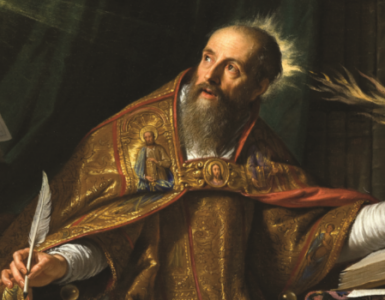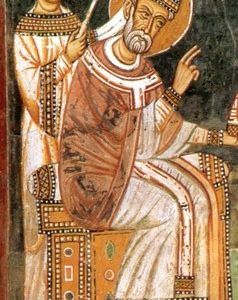Violent anti-Catholic sentiment, making public observance of the Faith dangerous. Geopolitics muddying the waters of charity. Financial mismanagement resulting in a public scandal and fall from grace. Anyone who thinks either a) the Catholic Church is an institution that can be laid low by human actions or b) that it deliberately cultivates weak, subservient women needs to be introduced to St. Emily de Vialar.
de Vialar was born in 1797 in southern France, a time and place that were as dangerously antagonistic toward Catholicism as anything that exists today. For frame of reference: St. Emily was born only three years after the height of the Reign of Terror, during which churches were closed, priests were murdered, and forced marriages between religious were enacted. She was born in the same year that French troops kidnapped the reigning Pope, who then died after six weeks of captivity. So when we hear that she had to be baptized in secret, and clandestinely taught the faith at home by her mother, the information seems surreal to our modern ears.
But, proving that no attempt to exterminate Catholicism will be successful, not even one as violent and organized as the French Revolution, de Vialar was carefully handed down the Faith, and in such a measure that a desire to enter religious life was kindled in the girl. Then, to counter all claims that Catholicism delights in the cultivation of timid, suppressed women, it sainted a woman who stood up to her father to make that dream of religious life happen.
Now, in the father’s defense, he had lived through the Revolution. He had seen nuns hauled into the streets and off to the guillotine, so the prospect of his daughter making such a dangerous vocational choice must have filled him with fear. He preferred his daughter to marry, to sensibly settle down. Emily, however, had different ideas, and the two fought about frequently, making life together tense and stressful. The fact that, under the direction of the parish priest, Emily set up an out-patient clinic on the family terrace did nothing to ease father/daughter relations.
For fifteen years, de Vialar dedicated herself to charitable work in her community. Known as “the good angel of Gaillac”, she helped the poor, particularly children neglected by their parents. Then, the death of a relative left her with a sizable inheritance- sizable enough that she was able to purchase a large house in town and moved into it with three other companions. They dedicated themselves to the care of the poor and education of children. Their good works attracted other women, and within the year, the archbishop gave the women permission to start a religious order- the Congregation of Sisters of St. Joseph of the Apparition.
In 1835, Emily and several other members Congregation traveled to Algeria to help the sick during the midst of a cholera epidemic. The Algeria of Emily’s time was a land that had been invaded by France, annexed, and the conquered people removed from their land, displaced by European settlers. In a land of refugees and frequent uprisings, of colonial invaders and poor sanitation, Emily and her sisters tended the battered people of Algeria.
St. Emily de Vialar began to seek papal approval of her order, but the interplay between secular politics of France and Algeria, and religious politics involving the Bishop of Alger prevented the pope from giving his recognition. When the Congregation of Sisters of St. Joseph of the Apparition finally did gain papal approval, it was after its founder’s death.
In the midst of global upheaval and confusion, Emily endured the same on a personal level. Her estate, which had been bankrolling the Order, was so poorly managed that by 1851, she was bankrupt. The Sisters were destitute, sometimes even getting their only meals from soup kitchens run by other Orders. Public opinion of Emily and the Sisters turned, and they fell out of favor—at one point, they were excommunicated by the Bishop of Alger because of their financial ruin.
Refusing to crushed under the weight of poverty and scandal, Emily moved the Order to Marseilles, where the local bishop helped her slowly rebuild the Congregation. By the time Emily died, 40 houses in three continents were up and running, and to this day, the Congregation of Sisters of St. Joseph of the Apparition serve the poor.
Ninety-five years after her death, Emily became St. Emily de Vialar, a survivor of a bloody chapter in France’s history, a woman with a strong will and clear vision, and a saint to call on when it seems the whole world is ordered against you.
✠
image: Reliquary of Saint Emilie de Vialar on the Eglise Saint-Pierre Gaillac in the Tarn department, photo by Didier Descouens / Wikimedia Commons (CC BY-SA 4.0).












